
Typical cottage gardens—the ones we see in English gardening books and magazines—are undeniably beautiful. But often, when gardeners in the States attempt to replicate their charming and iconic look, the result can be unstructured and chaotic. We set out to create a garden in North Truro, Massachusetts, that was inspired by the romantic look and feel of those English gardens, but we didn’t want it to look messy and unruly. However, because we live on a bluff on Cape Cod, we felt that a formal garden design would look out of place on the windswept site that is surrounded by native grasses, shrubs, and wild roses. So instead, we opted for a casual cottage style that uses color and repetition to prevent visual chaos.
Before a single perennial could be planted, we had to plan for the challenges of the site itself: punishing winds; cool, damp springs; and salt air. The gardens envelop two adjacent cottages, which we use as both windbreaks and a framework to extend the gardens vertically, with many of the shingled walls clothed in vines and scramblers (photo, below). Next, because the property sits literally on top of a sand dune, we had to amend the soil. Finally, we had to learn how to highlight—and contain —hundreds of varieties of perennials and shrubs and nearly 80 different kinds of roses in our seaside location.
Color control and repetition help avoid a chaotic look

True to the cottage style, our garden focuses on flowers in lush abundance. To achieve this effect, we use a very close planting style—one that requires some vigilance to make sure that the stronger growers don’t smother the more timid ones. The garden is dominated by plants that flower in cool, soft colors (blue, violet, soft yellow, pink, white, chartreuse). This particular color scheme gives the landscape a soothing appearance and an overall sense of calm, which helps combat any chaos that may creep in.
We try to achieve design coherence through the careful repetition of several foolproof signature plants: lady’s mantle (Alchemilla mollis, Zones 3–8) and ‘Six Hills Giant’ catmint (Nepeta ‘Six Hills Giant’, Zones 4–7) in early summer; gaura (Gaura lindheimeri, Zones 5–9), ‘Summer Beauty’ allium (Allium tanguticum ‘Summer Beauty’, Zones 4–7), and bog sage (Salvia uliginosa, Zones 6–10) in midsummer; then ‘Waverly’ salvia (Salvia ‘Waverly’, Zones 7–9) and a few select aromatic asters (Symphyotrichum oblongifolium and cvs., Zones 3–9) in fall. We have also planted close to a dozen shell-pink climbing roses—notably, ‘New Dawn’ (Rosa ‘New Dawn, Zones 5–8) and ‘Dr. W. Van Fleet’ (Rosa ‘Dr. W. Van Fleet’, Zones 5–8)—even sending several onto the roofs of the houses (photo, above).
To keep the potential for messy frothiness further in check, we do use some bold-leaved and strongly structured plants throughout the gardens. Golden Spirit smoke tree (Cotinus coggygria ‘Ancot’, Zones 4–8) and ‘Sun King’ aralia (Aralia cordata ‘Sun King’, Zones 4–8) bring welcome textural breaks from the masses of flowering perennials and shrubs.
Despite our limited space, we have made sure that the grass pathways throughout the garden are wide and easy to navigate.
Small beds allow for unique vignettes and keep things organized
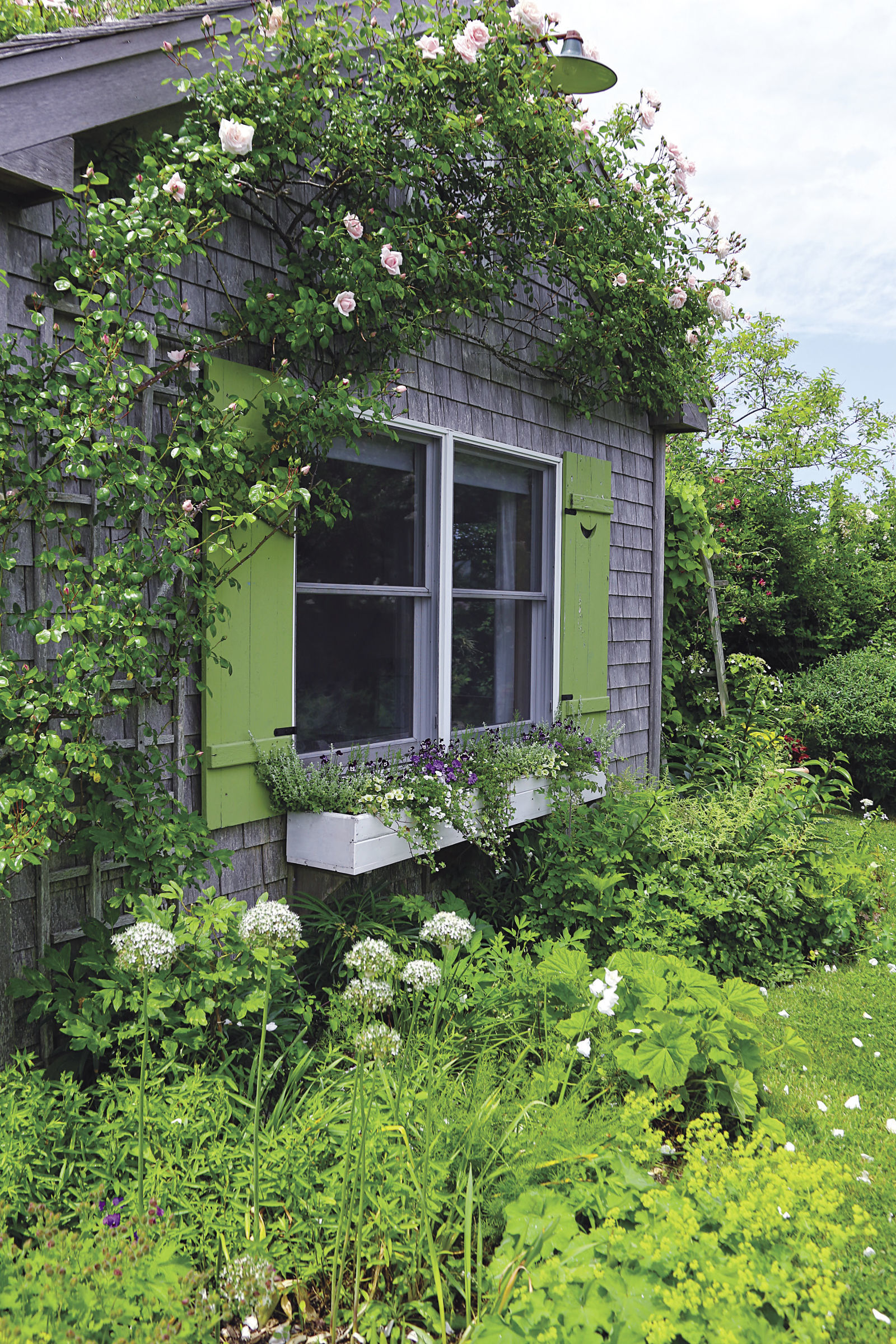
The creators of the large British gardens that we find so inspiring (think Sissinghurst and Hidcote) have the luxury of fashioning separate garden rooms defined by hedging, walls, and terracing. But this design approach wasn’t an option for us. Mostly this is because our garden is small (about three-quarters of an acre)—and the evergreen yew (Taxus spp. and cvs., Zones 2–9) and boxwood (Buxus spp. and cvs., Zones 5–8), so often used to delineate garden compartments abroad, just simply won’t survive the desiccating winter winds (regularly 30 to 40 miles per hour) on a bluff above Cape Cod Bay.
Instead, we developed a series of smaller beds, visually connected but not physically attached, separated by grass pathways (site plan). These island beds are our version of garden rooms. They’re an easy way to create a series of unique vignettes that highlight captivating plant combinations—pairings built on texture, color, and cultural requirements. Each small bed tends to have its own micro-environment, which can help dictate the plant palette—and the ultimate design. For example, a hot, dry strip along our gravel drive is home to drought-tolerant—yet texturally contrasting—plants like ornamental oregano (Origanum ‘Rosenkuppel’, Zones 5–8), Mexican feather grass, and golden-leaved thyme (Thymus cv., Zones 3–8).
Wide paths allow easy navigation while self-sowers fill the gaps
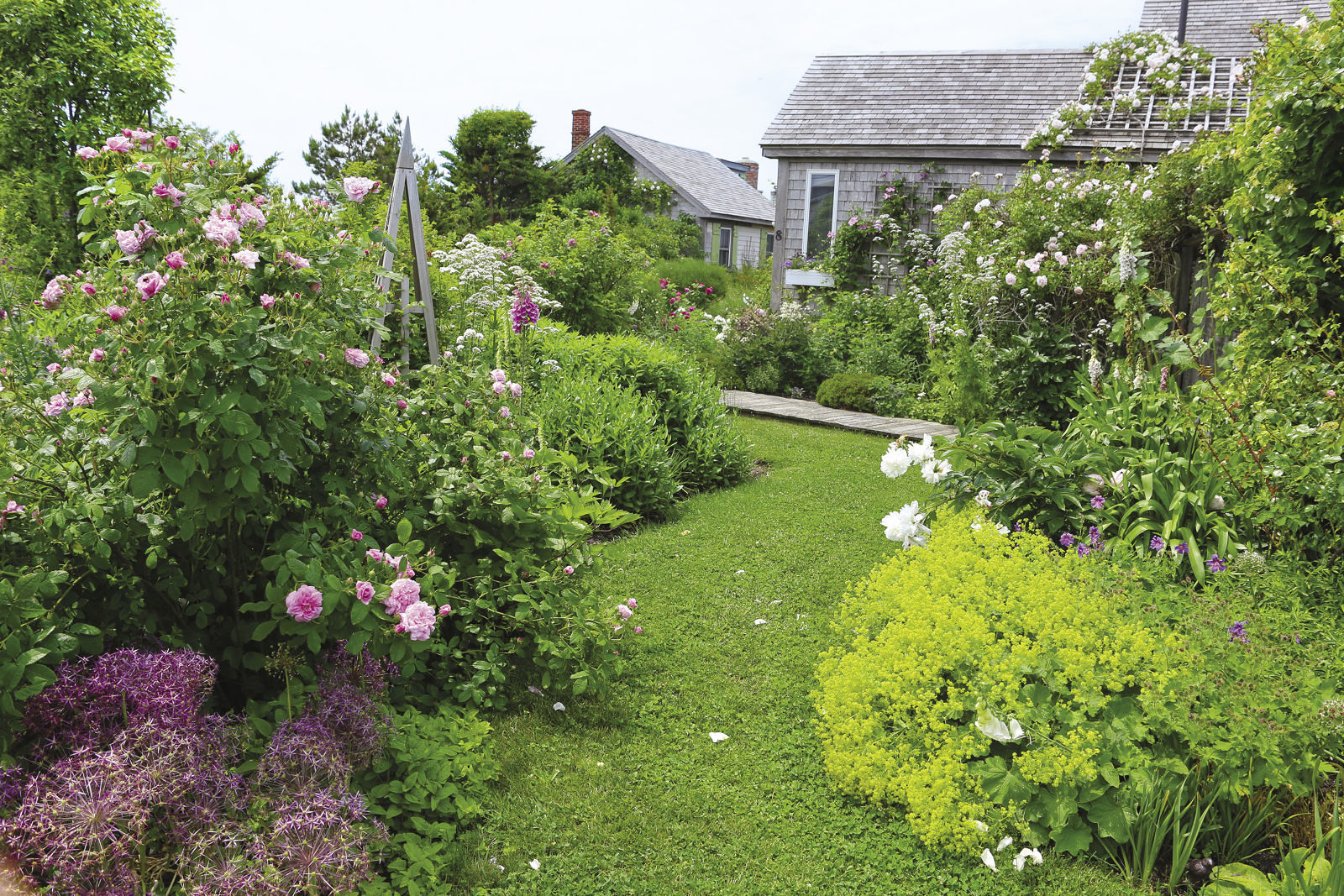
Despite our limited space, we have made sure that the grass pathways throughout the garden are wide and easy to navigate (photo, above). We’ve followed the rule that two people should easily be able to walk side-by-side as they wander through the garden. The width allows plants to spill a bit into the walkway (a cottage garden signature trait) without blocking the journey. The paths’ natural and winding character gives them an informality and invites the observer into the garden and around to the next corner. Also, the grass provides a deep green “full stop” where the eye can rest before taking in more of the lush plantings.

Self-sowing plants—a staple of many cottage gardens—do make an appearance in our gardens, as well. For the most part, these plants are profuse bloomers that help ensure an exuberant look throughout the year and fill in any bare spots, making the garden look full and lush. The list of self-seeders in our garden is a long one and includes biennials, short-lived perennials, and annuals. However, we do carefully curate them. For example, we deliberately introduced only the white forms of rose campion (Lychnis coronaria and cvs., Zones 4–8) and dame’s rocket (Hesperis matronalis*, Zones 3–8) to help keep the color palette under control. And careful editing is required each year when new seedlings appear to ensure that more prolific seeders don’t swamp shyer plant companions—or completely dominate the garden.
*See invasive alert below.
At a Glance
Two Properties in One
Our garden started out as just the small parcel of land surrounding cottage 1. After a few years, we were able to purchase cottage 2 next door, create a new garden, and blend the two into one flowing and frothy landscape.
1 Cottage
2 Cottage
3 Driveway
4 Native plants area
5 Arbor
Plants
Plants that thrive in high winds and fast-draining soils
Cape Cod has a lot of good things going for it: cool/moderate temperatures in spring and summer; beautiful beaches; and incredible lobster rolls. Two other things that the Cape has in abundance, however, are a challenge for plants: high winds and lots of sand. We’ve found an array of plants that laugh in the face of desiccating winds and fast-draining soil. If these plants can survive in North Truro, imagine how well they might do with more amenable conditions?
Mexican feather grass

Nassella tenuissima
A self-seeding grass that is not usually reliably hardy in New England, this beauty winters over nicely in our fast-draining soil. It’s soft to the touch and beautiful in the wind.
Zones: 6–10
Size: 12 to 24 inches tall and 30 inches wide
Conditions: Full sun; well-drained soil
Camass

Camassia leichtlinii ssp. suksdorfii
Clear blue blooms on 30-inch stems help fill the late-spring gap between bulbs and the onset of perennials. It is said to do best in moist conditions, but it thrives for us, persisting and multiplying in our fast-draining soil.
Zones: 5–9
Size: 2 feet tall and 1 to 2 feet wide
Conditions: Full sun to partial shade; moist soil
‘Betty Corning’ clematis

Clematis ‘Betty Corning’
Clematis can be challenging in a windy site with soils on the dryer side, but ‘Betty Corning’ thrives, possibly because its finely cut foliage does not desiccate. It gets covered in porcelain bluish pink, bell-shaped flowers throughout the summer.
Zones: 4-9
Size: 5 to 6 feet tall and 2 to 4 feet wide
conditions: Full sun to partial shade; well-drained soil
Father Hugo’s rose

Rosa hugonis
This is our first rose to bloom and is covered in single yellow flowers in late spring. The delicate, ferny foliage, unlike that of most roses, remains beautiful throughout summer and fall.
Zones: 5–9
Size: 7 to 9 feet tall and 5 to 6 feet wide
Conditions: Full sun; well-drained soil
Red cedar

Juniperus virginiana
By far the most successful evergreen to withstand the Cape’s relentless winter winds, we find that the straight species does better than any of the named selections.
Zones: 2–9
Size: 30 feet tall and 8 feet wide
Conditions: Full sun; well-drained soil
‘Patricia’ geranium

Geranium ‘Patricia’
This is a well-behaved geranium with bright magenta flowers that look fantastic when paired with the chartreuse blooms of lady’s mantle.
Zones: 3–8
Size: 24 to 36 inches tall and 24 to 30 inches wide
Conditions: Full sun; well-drained soil
Sea kale

Crambe maritima
This plant does best for us when planted directly in the sand and is a good companion for lavender (Lavandula spp. and cvs., Zones 5–8), which enjoys the same conditions. Sea kale is one of the first perennials to bloom, with fragrant white flowers rising above elegantly crimped, glaucous foliage.
Zones: 5–9
Size: 2 to 3 feet tall and wide
Conditions: Full sun; well-drained soil
David Kirchner and Scott Warner battle voles, moles, bunnies, and an array of other wildlife while tending their gardens in North Truro, Massachusetts.
Illustration by Conor Kovatch
Photos by Danielle Sherry except where noted: Michelle Gervais; Kerry Ann Moore; Sue Heath/gapphotos.com; Jennifer Benner
*Invasive alert: Dame’s rocket (Hesperis matronalis)
This plant is considered invasive in CO, CT, IL IN, IA, MA, ME, MI, NH, NJ, OH, PA, TN, VT, WI, and WV.
Please visit invasiveplantatlas.org for more information.
Fine Gardening Recommended Products

Buffalo-Style Gardens: Create a Quirky, One-of-a-Kind Private Garden with Eye-Catching Designs
Fine Gardening receives a commission for items purchased through links on this site, including Amazon Associates and other affiliate advertising programs.

A.M. Leonard Deluxe Soil Knife & Leather Sheath Combo
Fine Gardening receives a commission for items purchased through links on this site, including Amazon Associates and other affiliate advertising programs.


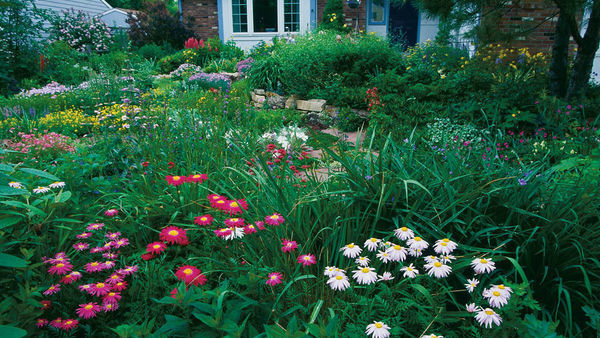
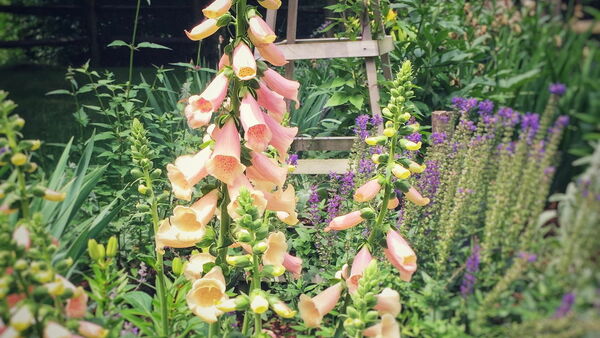

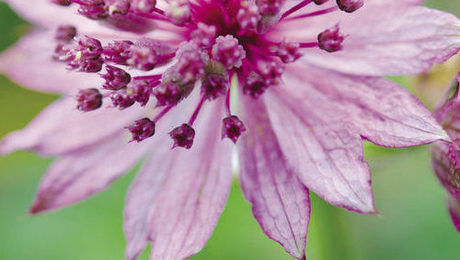













Comments
Log in or create an account to post a comment.
Sign up Log in